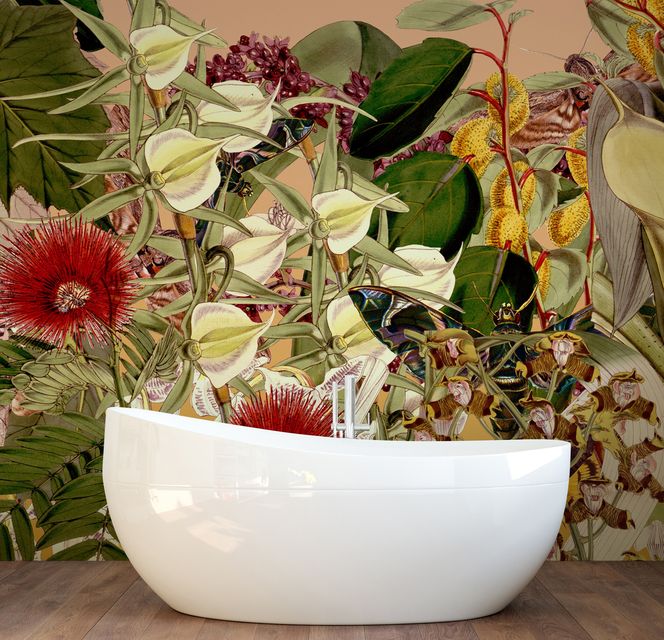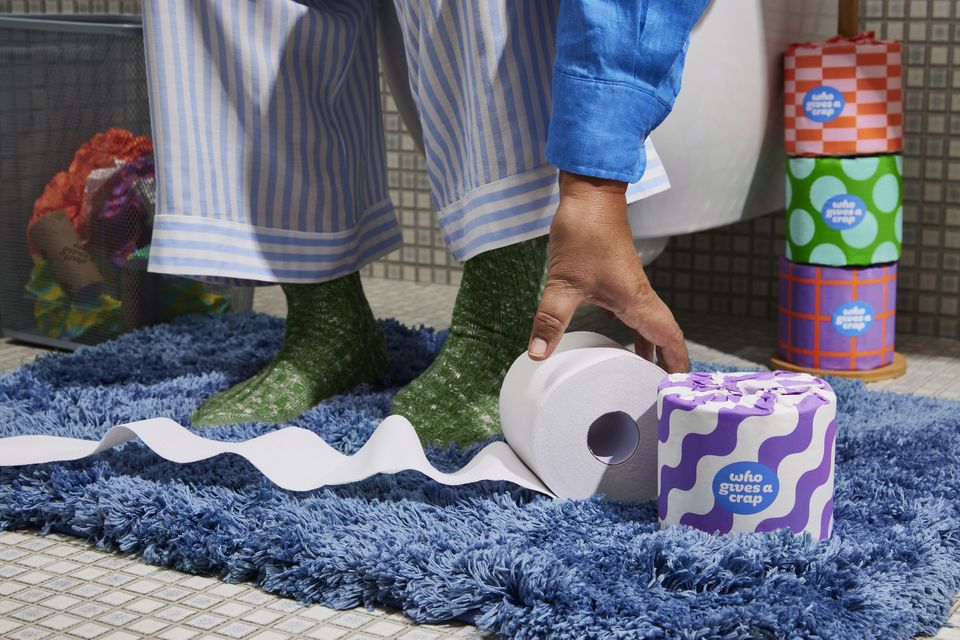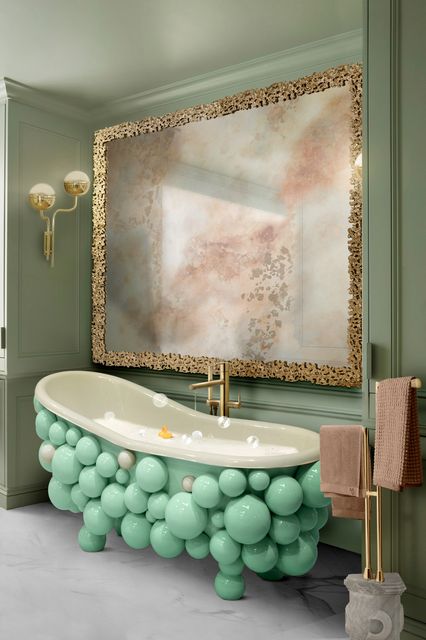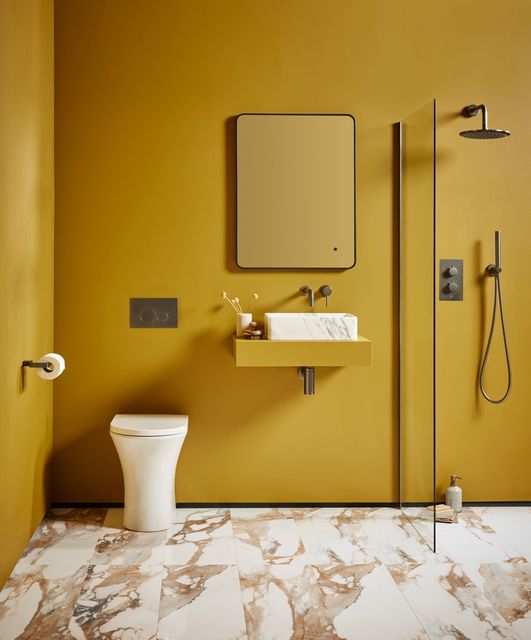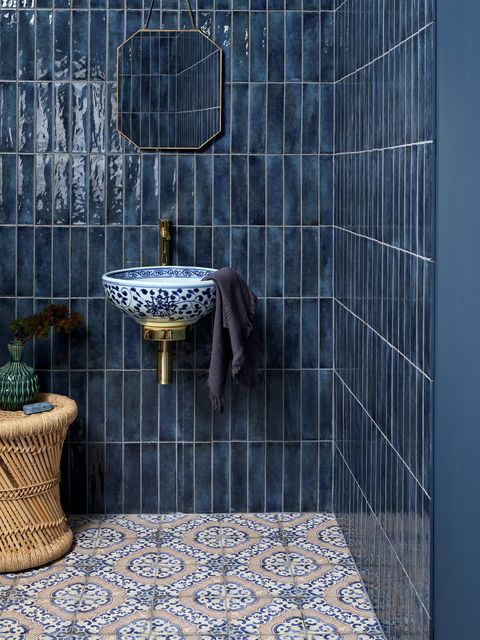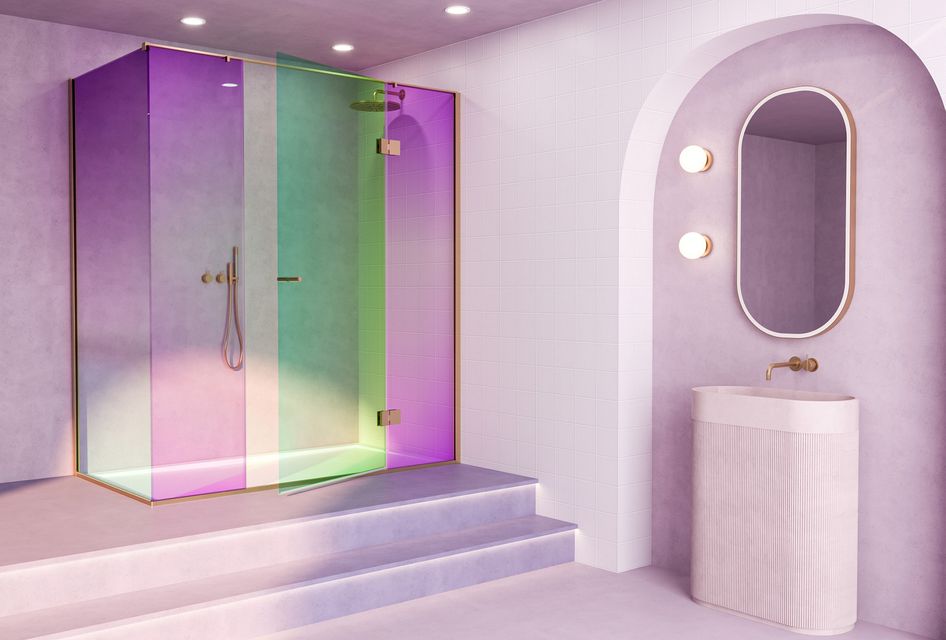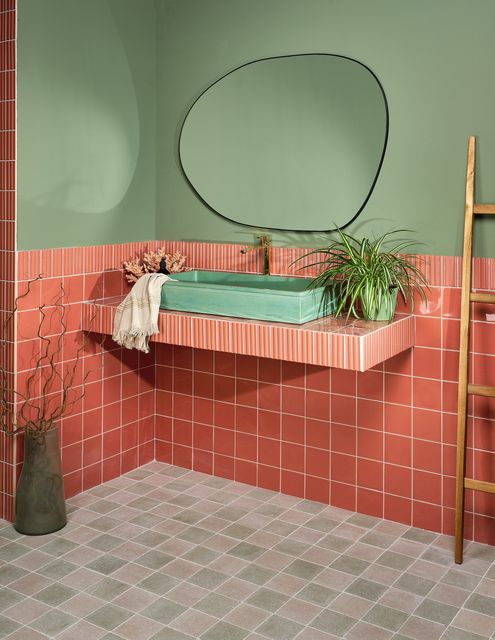The bathroom innovators are on it with a new generation of fixtures and fittings, all designed to keep germs at bay. But do we really need them and are they worth the cost?
“Bathroom hygiene is going to explode in the next ten years,” says Tony Murphy of Tile Style. “But for a lot of people, it’s still not high on the list.”
His younger clients are understandably more concerned with the overall cost of a project than its long-term cleanliness. “If it looks clean, they think it is clean. But people in the 50-plus age bracket are the ones who really reflect on design for life. They don’t want to be installing another bathroom.”
Mural wallpaper from Wallsauce.com
Murphy has always been an advocate for investing in the parts of a bathroom that you touch (handles, levers, taps). “The poorer the quality, the quicker they will succumb to wear and tear.”
Now, bathroom design is moving towards touch-free technology. Most people have encountered sensor-activated taps and toilets in public washrooms. It’s not always a good experience.
Flapping soapy hands around a faucet does not necessarily make water come out of it. Some toilets rumble starting to live while the job is not yet done. Others seem unflushable. Installing this technology at home isn’t always straightforward either. I’ve been in homes where a bathroom visit requires a tutorial from the hosts.
Recycled toilet paper from Who Gives A Crap
Touch-free technology isn’t hugely expensive. Ikea’s chrome-plated Brogrund wash-basin mixer tap with sensor costs €150. According to the blurb: “Like magic, the water turns on at the slightest hand movement in front of the tap, at a pre-set temperature.”
But Irish homeowners aren’t buying it. “We only really sell sensor taps for use in public areas,” says Ger Fahy of Sonas Bathrooms. “The available designs are limited and they’re more complicated to install and maintain because there are electricity involved.” Sensor taps may be easily priced but all plumbers are expensive.
Rimless toilets, in contrast, have gone viral. This is a redesign of the pan without the grungy rim around the inside. “About 75pc of the toilets we sell are rimless,” Fahy says. “I’m confident that all our toilets will be rimless by the end of 2024.”
Newton bathtub by Covet House
Rimless toilets don’t necessarily cost more than traditional toilet pans and are easier to clean. Most customers of Sonas products pay between €300 and €600 for a full toilet set; many are prepared to pay slightly more for a wall-hung toilet. A mere five years ago, Irish homeowners simply didn’t believe in “floating toilets”. Now, they account for 15pc of Sonas’ toilet sales.
“Wall-hung toilets and vanity units make cleaning easier and the bathroom is more hygienic because there’s less opportunity for bacteria to build up.” Prices range from €200 to €565 but all require a frame and cistern built into the wall behind the loo.
The Japanese company Toto is the market leader in fancy toilets, the fanciest of which are marketed as “shower toilets”. In my imagination, the name “shower toilet” conjures unpleasant images. In real life, they clean you with warm water from below.
Bathroom from Color by Scudo
Functions include: rear cleansing, front cleansing, oscillating cleansing, and pulsing cleansing. This process takes the place of toilet paper and some models include heated seats and warm air drying. Overall, it’s a hand-free experience including the automatic flush.
They’re big in Japan where some toilets play music to mask the embarrassing noises. In Ireland, shower toilets are niche, mainly because of the cost. The Toto Washlet RX Ewater plus shower toilet seat from Tile Style costs €2,543 and requires a separate toilet pan (€631). Those who take the plunge use the phrase “game-changer” a lot.
When researching bathroom hygiene, prepare to be a little grossed out. Other interesting technologies from Toto include “tornado flush”. Whatever is in the toilet is sucked downward by a powerful circular motion that also cleans the pan.
Tiles from Tile Style
“When you flush a conventional toilet it sends a plume of bacteria rising into the water,” Murphy explains. A Toto GP Rimless Wall Hung Toilet Pan with the tornado flush function costs €577 plus €169 for a seat (all from Tile Style).
There are cheaper ways of improving hygiene. One of these is to hang the toilet roll so that the paper hangs in the “over” position. This means the user is less likely to touch the wall behind the roll, thereby spreading germs. In an article for the Steam Shower Store, Andrew Ellis shows an illustration taken from an 1891 patent for perforated toilet paper.
Diochroic shower from Shower Lab
The patent was taken out by New York businessman Seth Wheeler of the Albany Perforated Wrapping Paper Company, who was basically the inventor of toilet roll as we know it, and clearly shows the paper hanging over the roll. This allows for the paper to be easily pulled from the roll.
The main advocates of the “under” position are households with small children or puppies. The first Andrex puppy ad (1972) shows a Labrador puppy running off with a toilet roll. This, and its successors, defined cuteness for a generation.
Incidentally, toilet paper has a very poor environmental record, as highlighted by the 2023 Natural Resources Defense Council (NRDC) report, The Issue with Tissue. One of the best-reviewed international brands, Who Gives a Crap, offers 100pc recycled toilet paper (€44 for 48 rolls) in pretty packaging. It rates high on the feel-good factor but carbon footprints are hard to measure.
Textured tiling from Ca Pietra
Many bathroom materials are marketed as antibacterial. The Slate shower tray from Sonas (€775 for a 180 x 70cm tray) is one of their more expensive but Fahy says that people are prepared to pay the extra because of the material is anti-slip, antibacterial, and looks cool. It’s not actual slate, but is made from gel-coated, resin-bonded, mineral stone.
One of the more convincing new bathroom surfaces, Krion from Porcelanosa, is antibacterial by virtue of being without pores (there’s no place for germs to hide). If opting for traditional tiling, consider an antibacterial grout. BAL Micromax3 Eco (€28 for 2.5kg from Tile Style) comes in many different colors and is resistant to mildew, the black depressing fungus that is the bane of bathrooms.
See tilestyle.ie, steamshowerstore.co.uk, sonasbathrooms.com, and eu.whogivesacrap.org
